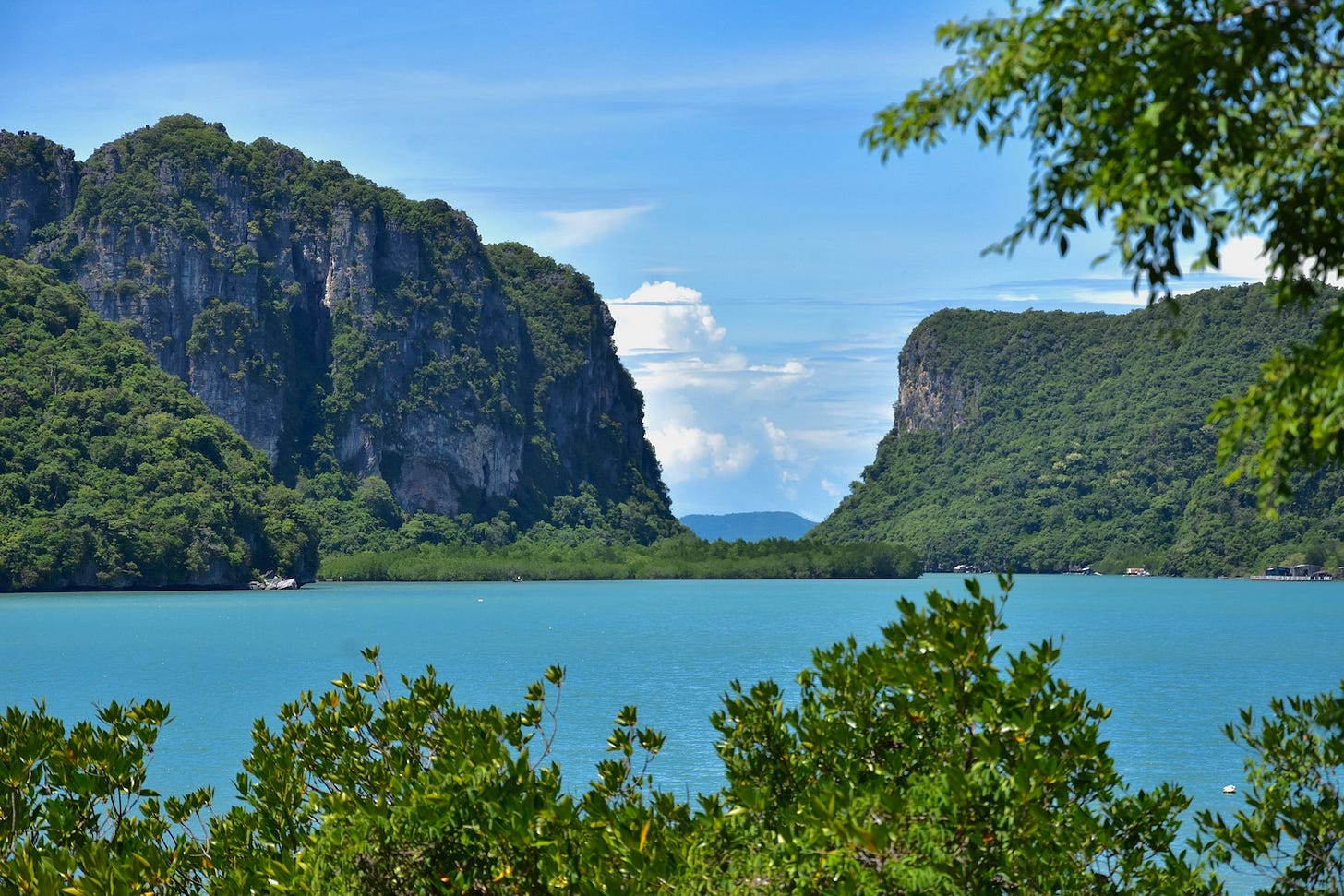T.I.C.D.: Nakhon Si Thammarat coast & islands (Part I: Khanom & Sichon)
The province's beach-rich northern two districts, condensed.
Welcome back to the Thai Island & Coastal Directory, a book-in-progress that promises to be the most complete guide to coastal Thailand ever written in English, covering more than 1,000 islands and all 24 coastal provinces. An upgrade gets you the T.I.C.D. and many other in-depth articles from Thai Island Quest.
T.I.C.D. ticker: So far, we’ve covered 936 islands and 279 notable coastal areas in 53 sections of the Thai Island & Coastal Directory.
To view all previously published sections, see the welcome page or the working Table of Contents, or click T.I.C.D. from the homepage menu.
Entering Nakhon Si Thammarat province…
Covered below, Khanom and Sichon draw the bulk of beach-focused travelers to Nakhon Si Thammarat. In the next section, we’ll cover the rest of this sizable province with its many waterfalls and historical sites.
Nakhon Si Thammarat provincial coast, islands and inland reaches
‘Nakhon,’ as Nakhon Si Thammarat is casually referred to throughout Southern Thailand, is the region’s second largest province after Surat Thani to the N. Nudging up fairly close to the Songkhla Lake region in the S, its roughly 180-km coast includes Thailand’s longest cape, Laem Talumphuk, along with a host of lengthy beaches drawing relatively few travelers.
Most of Nakhon’s finest beaches come in the N districts of Khanom and Sichon, both closer to the orbit of Don Sak and Ko Samui than Mueang Nakhon. Much of the rest of the coast is either rimmed by aquaculture plots or badly eroded to the point that seawalls have been controversially installed, for example at Hat Sai Kaeo, where a few seafront eateries are hanging on despite the drastic alterations. The province also has over a dozen islands, all of them very obscure.
Measuring in at 9,943 sq. km, Nakhon Si Thammarat began as an influential kingdom known as Tambralinga or Ligor until a pivotal 13th-century king gave it the current name as part of an embrace of Theravada Buddhism that came with close ties to Sri Lanka. The roughly 800-year-old chedi at Mueang Nakhon’s Wat Phra Mahathat remains one of the most sacred Buddhist sites in Southern Thailand and has been on UNESCO’s list of potential World Heritage sites since 2012.
Several protected areas make Nakhon a winner for nature-oriented travel. Named after the South’s tallest peak, Khao Luang NP hosts a bunch of big waterfalls that are often visited from Ban Khiri Wong, a misty fruit-farming village that has caught on with domestic travelers. Surrounding Khao Luang, the smaller NPs of Khao Nan, Namtok Yong and Namtok Si Khit also contribute to this top-tier waterfall destination. Along the coast, Laem Talumphuk Wildlife Sanctuary protects rare birds amid the tidal forest E of Mueang Nakhon. Further N, Hat Khanom - Mu Ko Thale NP oversees Khanom’s coastal mountains to go with Ko Tha Rai, Ko Wang and other isles at the S end of Mu Ko Samui — and the nearby pink dolphin habitat.

Islands and coastal areas below are arranged from N to S.
Khanom & Sichon district coasts
These two N districts have long competed for beachgoers, but the 2018 completion of a scenic coastal road linking Ao Thong Yee with Ao Thong Yang brought Khanom and Sichon closer together so that, today, they are almost more like one large destination with many beaches and natural sites to choose from.
When adding the caves, viewpoints, waterfalls and temples, you can see why Khanom and Sichon draw comparisons to Khao Lak and Takua Pa on the Andaman coast. Shared attributes include long beaches, mountainous backdrops, family-focused tourism, coastal NPs, and many day-tripping options nearby.



